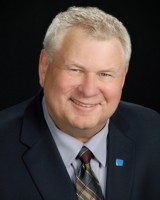
I don't know how many times I have heard a dentist tell me how he plans on cutting back and slowing down and he gets closer to retirement. On one occasion in which I had listed a practice for sale, the seller told me of his plans to cut his schedule back by one day per week to work on his golf game. I had never thoroughly analyzed the effect of a cutback before but decided to take a very close look at what the exact effects of such a cut back would be.
On first blush, one might presume that since this practice overhead was 60% that a cutback of $100,000 per year would result in a $40,000 loss in income. As I looked more carefully, it was clear that cutting the last $100,000 earned was eliminating incremental income which incurs only incremental expense. The only expenses on the last $100,000 produced were basically only laboratory and clinical supply expense, which together usually total about 15%. Add another 10% savings for salary cutbacks, and there is a total incremental expense of approximately 25% on the last $100,000 of income.
In this case, reducing the practice income by $100,000 would have resulted in expense savings of only 25%, or $25,000, but resulting in a loss in owner net income of 75% or $75,000.
Then I considered the loss in equity, or value of the practice by cutting back by $100,000. Since this particular practice had a price that was 70% of its gross collections, a reduction of $100,000 would result in a lowering of its price by $70,000.
Considering the $70,000 loss of equity and the $75,000 loss of incremental income, a cut back of one day per week would have resulted in a loss to the owner of $145,000, or 145% of the amount of the cut back in the first year alone! The seller, upon further reflection, decided to postpone working on his golf game until his practice was sold.
Now consider the plight of another dentist whose practice we listed. Over the past six years, he had reduced his income by cutting back by the amount of $300,000. For analysis sake, consider an average annual cut back of $50,000 per year for five years. Let's see the economic impact of that decision.
| Economic Impact of Cutting Back | |||||
|---|---|---|---|---|---|
| Year | Gross Reduction | Earnings Loss | Equity Loss | Annual Loss | Cumulative Loss |
| 1 | $50,000 | $37,500 | $32,500 | $70,000 | $70,000 |
| 2 | $50,000 | $37,500 | $32,500 | $70,000 | $140,000 |
| 3 | $50,000 | $37,500 | $32,500 | $70,000 | $210,000 |
| 4 | $50,000 | $37,500 | $32,500 | $70,000 | $280,000 |
| 5 | $50,000 | $37,500 | $32,500 | $70,000 | $350,000 |
| 6 | $50,000 | $37,500 | $32,500 | $70,000 | $420,000 |
| Total | $300,000 | $225,000 | $195,000 | $420,000 | |
This particular dentist had unknowingly actually cut his practice back past his break even point. That is, he did not generate enough income to cover his annual expenses. I am sure he would not have knowingly taken this course of action and I am sure that he did not realize the financial cost of his actions.
He may have considered that a lowering of $300,000 over six years would have meant a loss of $120,000 in income, and thought it was worth it for the extra "free" time. But he did not understand the true structure of the economics of a dental practice. That is the overhead from the first dollar earned up to break-even point is 100%. After the break-even point, overhead expense is approximately 25% of the incremental earnings. The blended overhead rate may be 60%, but in the actual conduct of running a practice, that is what I consider to be interesting, but useless information. In this case, this statistic misled the owner into taking a much more costly path than he would have otherwise knowingly taken. In this case the final result was much worse - the practice could not be sold during the owner's lifetime because it did not cash flow, or make a profit.
The saddest part of not understanding this phenomenon is that I have seen too many dentists in the last years of their practice working for free, when their health and passion for practicing have both greatly diminished. When a dentist considering retirement understands that the sale proceeds of selling will equal the income he earns for the next three years, and he continues to practice, he worked those years for free! Another decision he would not have made if he fully understood the facts.

 Add me to your address book
Add me to your address book